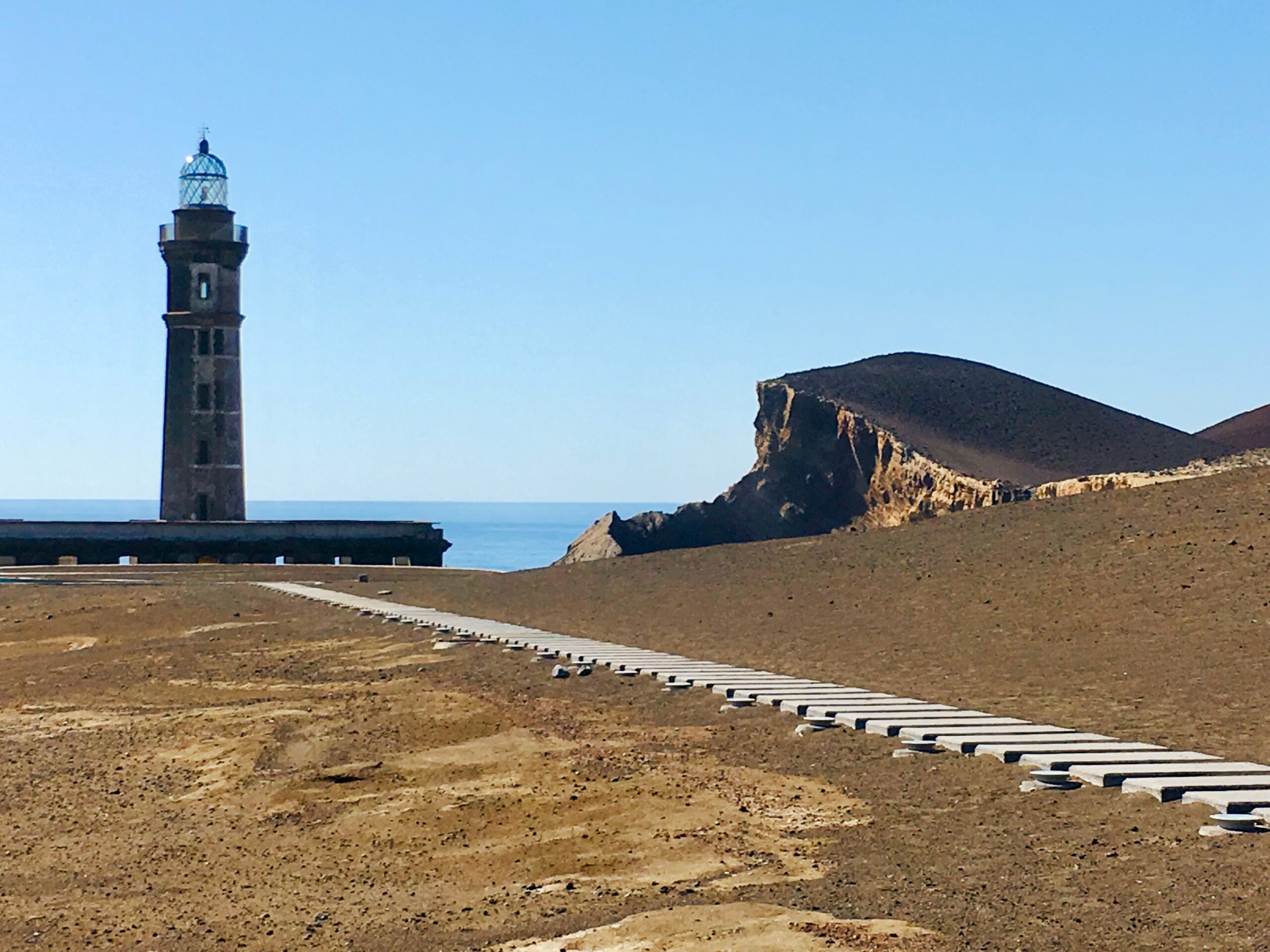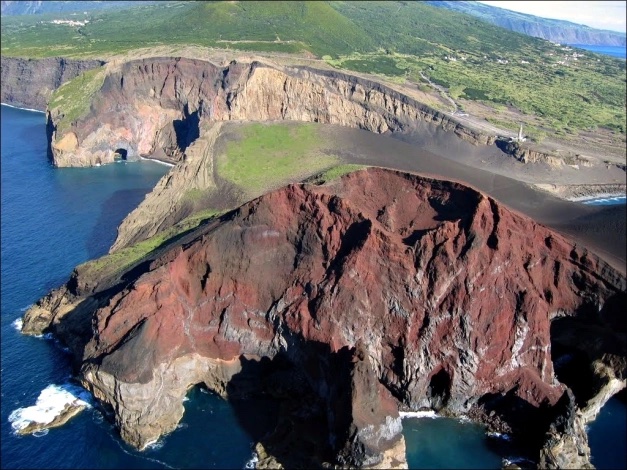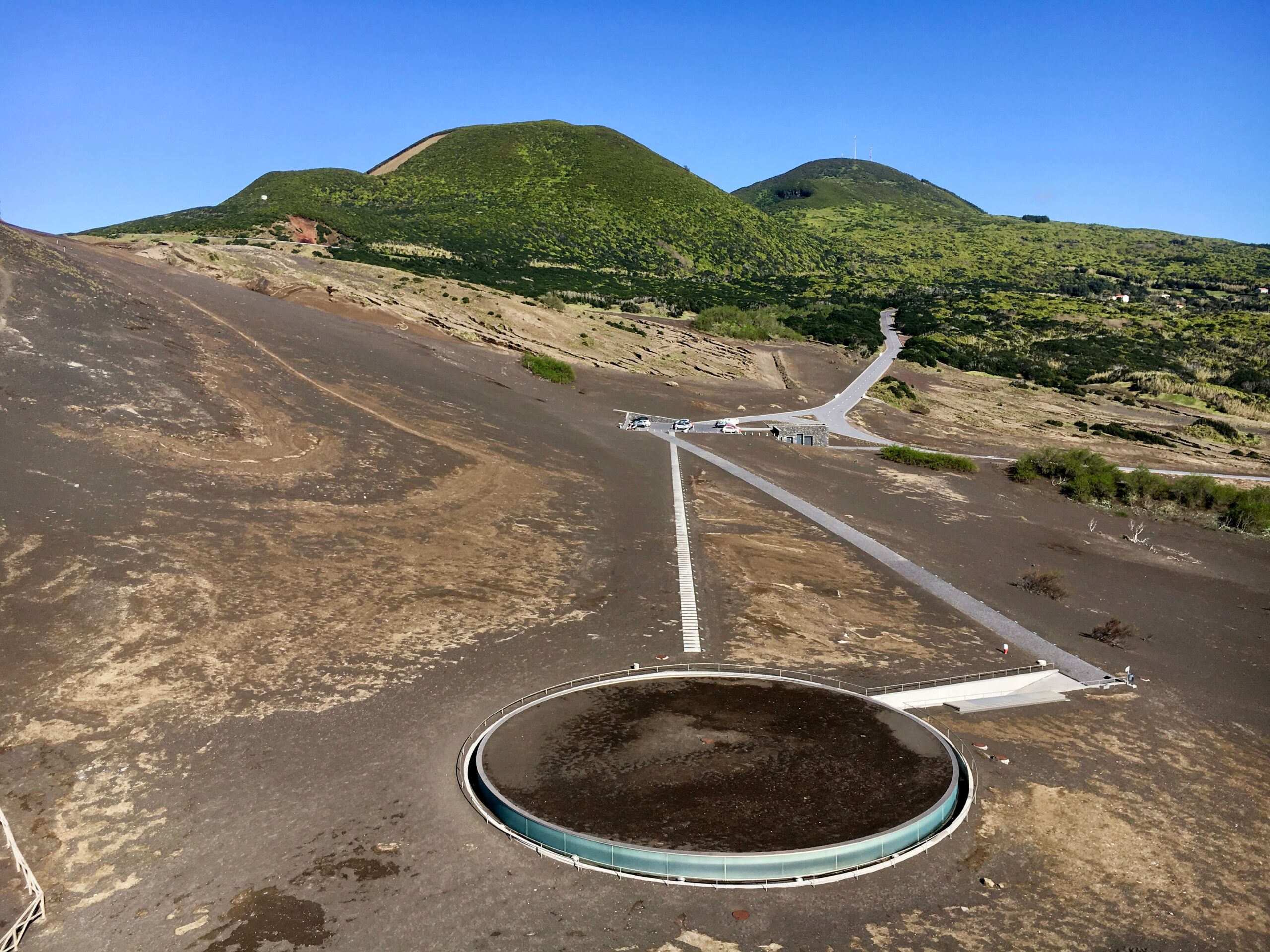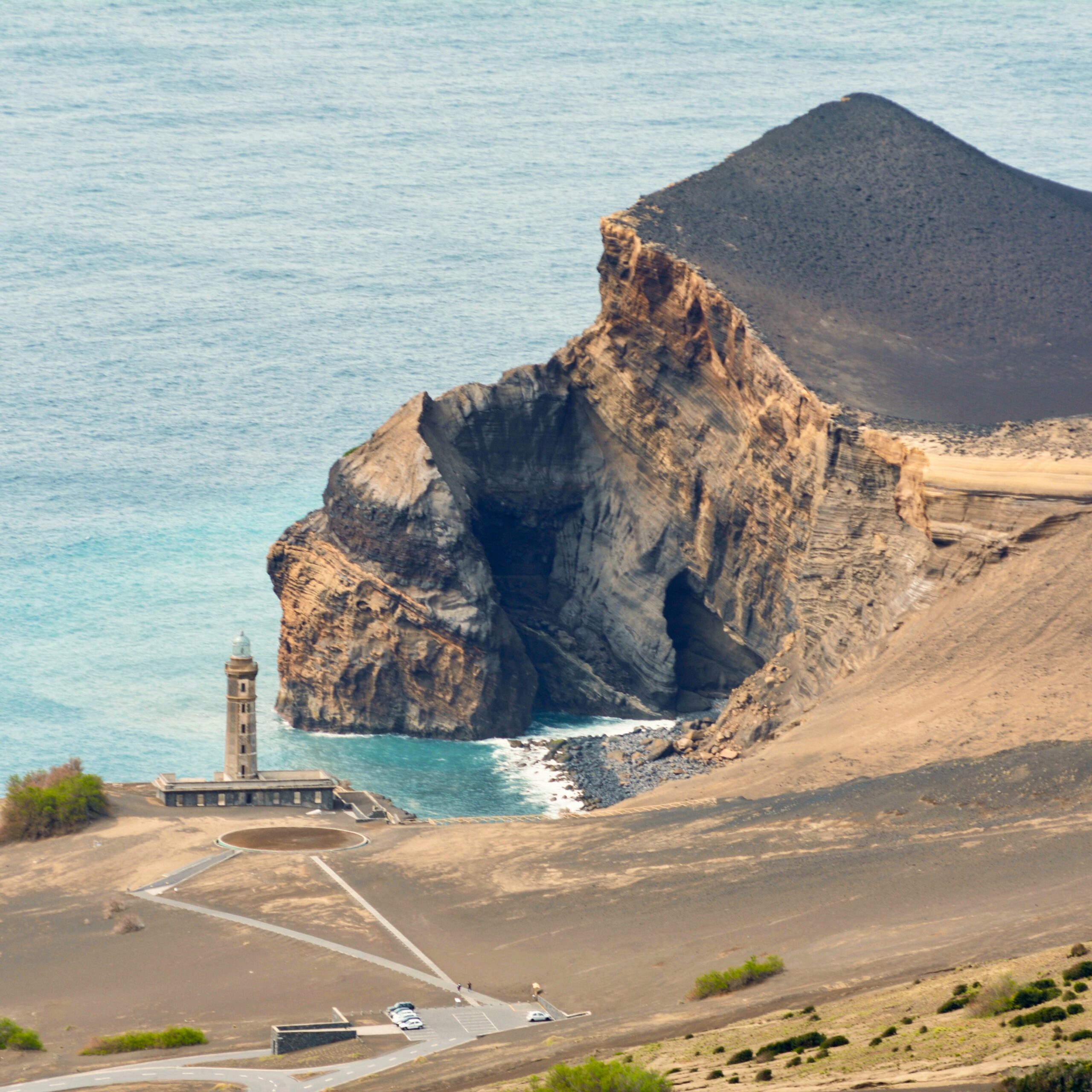The first Surtseyan Eruption followed from beginning to end

Capelinhos Lighthouse
Just 65 years ago the island of Faial, in the Azores, was 2,4 square kilometres smaller, and had more than twice the population it has today.
Capelinhos, the volcano, was just one of the thousands of submerged dormant cone in the area, this one just off the coast of the island of Faial, in the Azores archipelago
On a quiet september’s day of 1957, the earth began to shake, and so it continued for a couple of weeks during which more than 200 tremors of the V grade on the Mercalli scale were registered
Then, on September 23th, some terrified fishermen noticed that the ocean waters just off the coast began to boil spontaneously, and the next morning a thick cloud of black ash and vapour water begin to rose quickly reaching 1400m of height. The nightmare didn’t stop but instead increased in intensity and height and soon the houses, the crops, the trees, the paths were covered in thick black ash, while the constant tremors continued, along with the loud explosions.
The population was stunned and horrified, people were praying in desperation, hoping the phenomenon would soon stop and let them live and work in peace. Unfortunately, this was only the beginning, the submerged volcano kept spewing ashes for a whole week and then began to throw lava rocks in the air, lava streams in the sea, and terrifyingly loud explosions.
A Nova Ilha
A new, small island began to form just in front of the old lighthouse, called Ilha Nova (the new island), while the inevitable evacuation of the area of the two parish near the volcano (Capelo and Praia do Norte) began.

Capelinhos Volcano seen from the sky
During the subsequent year until May, the Capelihnos continued its activity throwing rock, ash in the surrounding area, eventually forming an isthmus between Ilha Nova and Faial and finally closing the gap completely, extending the island with a desolate land of almost 3 square km, and forming two black rocky peaks where the Ocean used to be.
The end of the world
Then, on May, the volcano entered into a Strombolian phase, generating more than 450 (!) earthquakes in just one night, leaving all the islanders thinking that the end of the world (or at least of Faial) was coming. The noise from the continuous explosions from Capelinhos was heard as far as in Flores, 220 km west of Faial.
That day, nor the world or Faial came to an end, and luckily there where not casualties throughout the whole year of eruptions, but for more than 2000 people life was going to change forever. Helped by a specific act from the US Government: “the Azorean Act”, signed by none other than John Fitzgerald Kennedy (who was a “simple” senator at the time), many people emigrated to America, forced by the fact that their land, covered in ashes, was to become unproductive for years, maybe decades.
In the following years, many other emigrated too, leaving Faial with half the population it had before the eruption.
The Capelinhos Lighthouse, which incredibly survived the eruptions
Recovery and becoming a world attraction
More than 60 years later, the ash is gone, and most of the western side of Faial is again covered in lush forests. But the very area created by the eruption remains largely deserted and the contrast that appear suddendly to the travellers, especially when driving to Capelinhos coming from Praia de Norte is an unforgettable view.
The volcano is dormant now and can be “climbed” (it’s just a couple of hundred meters tall) by hiring a local guide, and there is a subterranean museum “Centro de Interpretaçao do Volcao dos Capelinhos” which has countless pictures of the event, documents and a video that shows the whole story of this incredible and frightening display of nature’s force.
Thousand of tourists now come to Faial every year to experience the strange sensation of walking on a land that just 65 years ago was not there.

Centro de Interpretaçao do Volcao dos Capelinhos









